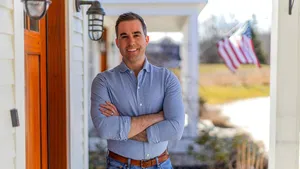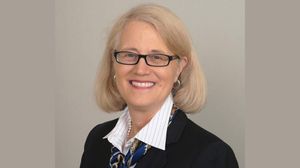As we observe National Black HIV/AIDS Awareness Day on February 7th, it’s a reminder that while much has been accomplished in terms of treatment and prevention, the African-American community continues to be disproportionately affected by HIV/AIDS. According to the Centers for Disease Control and Prevention (CDC), while the rate of new HIV diagnoses among African-Americans declined 15 percent from 2010 to 2017, Black Americans still account for nearly half of all new HIV cases each year. At the same time, only three out of five African-Americans with HIV are receiving care for their condition. Among HIV-positive African-Americans who do receive care, however, almost 80 percent are virally suppressed, meaning their viral load has been reduced to an undetectable level where they can no longer transmit the virus to another person.
The message is clear: Finding ways to bring — or return — African-Americans with HIV to needed medical care remains as important as ever. And at the Visiting Nurse Service of New York (VNSNY.org), the nonprofit where I work, our Choice SelectHealth Medicaid HIV Special Needs Plan is demonstrating that with the right strategy and a committed staff this goal can be accomplished.
Employing Peer Navigators to Connect HIV-Positive Individuals with Treatment
Medicaid Special Needs Plans like SelectHealth are containing HIV/AIDS by enrolling high-risk individuals and providing care tailored to the unique issues they face. One of our key partners in this effort is New York State’s Ending the Epidemic (ETE) initiative, a program focused on identifying individuals with untreated HIV and linking them to care. Funded by an ETE grant, we’ve joined forces with The Alliance for Positive Change, a community-based group that employs specially trained peer navigators—many of them with the lived experience of HIV who have gone through similar challenges in remaining in care and treatment themselves—to target SelectHealth plan members who are no longer in care or having trouble with being adherent to their appointments and medications. With clinical and program oversight from SelectHealth ETE clinical and project directors, as well as supervision and support from The Alliance, the ETE outreach connects and accompanies our “lost to care” members back to medical care and treatment. The Peers also attempt to connect them to Alliance wrap-around support services from care coordination to support groups to incentivized medication adherence pharmacy services. In weekly case conferences at SelectHealth, the ETE team problem solves, creates follow-up plans and work-through scenarios for connecting with members “lost to care” or burdened with other survival priorities in their daily lives. They also remind members how to access dental, mental health and other services through their Choice health plan.
“We identify members who are in need of care, and then partner with the Alliance and their outreach peers to reach out to them,” says Choice senior vice president, Tom Dwyer, who oversees the SelectHealth plan. To help the navigators relate to plan members, The Alliance documents each member’s story — their treatment history and other details. And while the navigators are trained to interact with anyone, the program also makes an effort to match them to a member who may have a similar cultural background, life experiences, or language skills.
“The interactions typically start out with a series of face-to-face meetings,” notes Peter Soter, assistant manager of the ETE program for The Alliance and a field-based peer navigator himself. “Once the navigator establishes a relationship, our approach is uniquely proactive. Rather than giving the member a piece of paper and suggesting they make an appointment, the navigator goes ahead and makes the appointment with them. Then he or she reminds them about the appointment, and escorts them there.”
The navigator then continues to keep the plan member connected to the clinical side of SelectHealth, which oversees all of the member’s medical care. Each enrollee is linked with an HIV clinic or treatment site as well as a primary care physician or nurse practitioner. Our plan has had particular success reengaging members to primary care and a return to daily medication adherence, and an undetectable viral load. In fact, the 2019 New York State Quality Assistance Reporting Requirements report showed that SelectHealth led all HIV Special Needs Plans in the state with a viral suppression rate of 85 percent. “A really strong aspect to the program is how well it coordinates with the medical care, providing a full picture of members’ needs,” says Dr. Bill LaRock, clinical director of the Ending the Epidemic Project at Choice SelectHealth.
Overcoming Barriers to Care
A key feature of The Alliance program is its weekly case conference. In these meetings, SelectHealth clinical director Dr. Bill LaRock, nurse care coordinator director Lisa Miller, and all six Alliance peer navigators discuss plan members’ progress and next steps. The focus is often on barriers that may be impeding a member from getting on the path to treatment and ways for the Peers to connect with members regardless of barriers. These barriers to care include unstable housing, poor access to providers, mental health issues, substance abuse, living in poverty and other health problems. Weekly phone case conferences with Mt. Sinai HIV clinic social workers led by Dr. Dobkin move information back and forth about our members lost to care who are patients at those sites enabling Peers to reach out to those members as well.
“Social isolation is a big part of the story,” notes Dr. Jay Dobkin, medical director at CHOICE SelectHealth and an associate professor of clinical medicine at Columbia University, where he works in Columbia University Medical Center’s AIDS program. “The peer program and SelectHealth providers at the clinics fill the gap by providing the kind of assistance that most of us get from our personal support network of family and friends. Our members sometimes lack that support and may even have negative social support — people around them who contribute to their problems rather than helping to solve them.”
Cultural stigma around HIV can also be a barrier. Easing this stigma is another way a member’s peers can help: “Young members come to the clinic and meet older individuals who have had HIV for 30 years,” says Soter. “They see it’s not a death sentence — they can have a productive life and be a respected and accepted part of a community. They then share that message with other members.”
Donald’s Story: Building Trust over Time
Mistrust of the healthcare system is yet another challenge that often needs to be overcome. Donald, an African-American in his mid-fifties who contracted HIV more than 30 years ago through heterosexual sex, had been out of care for a number of years. He came to SelectHealth’s attention two years ago following frequent hospitalizations due to his advanced HIV/AIDS along with substance abuse and severe mental health issues.
Soter and The Alliance team had tried unsuccessfully to locate Donald at his home and local clinics. Feeling sick, Donald finally put his trust issues aside connected with The Alliance satellite hub, CASA, in Washington Heights where he began daily directly observed therapy (DOT), where an Alliance navigator watches the patient take each dose of medication to ensure that it’s being taken daily. Navigators at the CASA Alliance site then contacted the ETE Peer team which accompanied Donald back to his primary care NP at NYP Hospital clinic.
When SelectHealth reconnected with Donald last summer, he had a viral load in the high 200,000s. Soter and Alliance team encouraged him to continue with a daily DOT program, connected him with harm reduction services at The Alliance and Donald has been making great strides since then. “Meeting these members on their ground is a way to build trust,” says Soter. “By showing up again and again to see Donald, I let him know that I was truly concerned.”
“Sometimes it takes 10 visits, and sometimes it takes 40,” adds Dr. LaRock. “With this ETE grant, we don’t have visit limitations. Donald’s case shows that even people with ongoing mental health and substance abuse issues can do well with HIV, as long as they have someone they trust helping them stay with their treatment — someone to accompany them on the journey. The peer navigators trained by The Alliance, who are living and thriving with HIV themselves, are in a unique position to bridge plan members back to care.”


































































